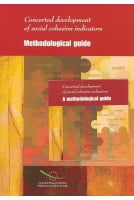- Exclusivité web !



Foreword
Introduction
Part I - Well-being for all and citizens' involvement: the approach of the Council of Europe
I. Well-being for all as the objective of social cohesion
1 . Well-being and well-being for all: the differences
2. The benefits of the concept of well-being for all
3. A better understanding of the relationship between subjective and objective well-being
4. Well-being for all as a means of improving life in the community
Conclusion
References
Appendix: tables
II. Involving citizens in defining and measuring well-being and progress
Introduction
1. The proposed framework of our study
2. How to approach the question of well-being (epistemological issues)
3. Working with citizens to develop knowledge for societal progress- First findings from research
4. Reflections on the key elements of well-being for all
Conclusions
References
Appendix: methodology
Part II - The understanding and perception of well-being: individuals and goods
I. Understanding well-being to ensure that it is equitably accessible
Introduction
1. A general aspiration to well-being
2. Ensuring well-being: in search of a new ethics
Conclusion
References
Further reading
II. Well-being: perception and measurement
Introduction
1. Well-being and its perception
2. Measurement of well-being
3. Public goods, context characteristics and national well-being in the social state
4. Private-public differentiation and well-being
Conclusions
References
Further reading
Part III - Well-being and responsibilities
I. The common good, well-being and the responsibility of local authorities
1. The common good and the public interest
2. Well-being and globalisation
3. Local authorities' role and responsibilities and the tools at their disposal - The example of France and the Ile-de-France region
Conclusion
References
Further reading
II. From ill-being to well-being: individual and collective responsibilities
Introduction
1. Proposed definitions
2. Learning processes for a person's return to well-being: individual and collective dimensions
3. The learning process of well-being/ill-being as it affects wage-earners
Conclusion
Part IV - The case for a society focusing on the common good as a condition for well-being
From welfare state to welfare society
1. Collective imagination and well-being: the two Utopias
2. Welfare society as a new project for well-being
Conclusion: access to, and the use of, resources and rights
References









Attention, en vertu de nos conditions générales de vente, l'achat des PDF/epub est réservé aux particuliers.
